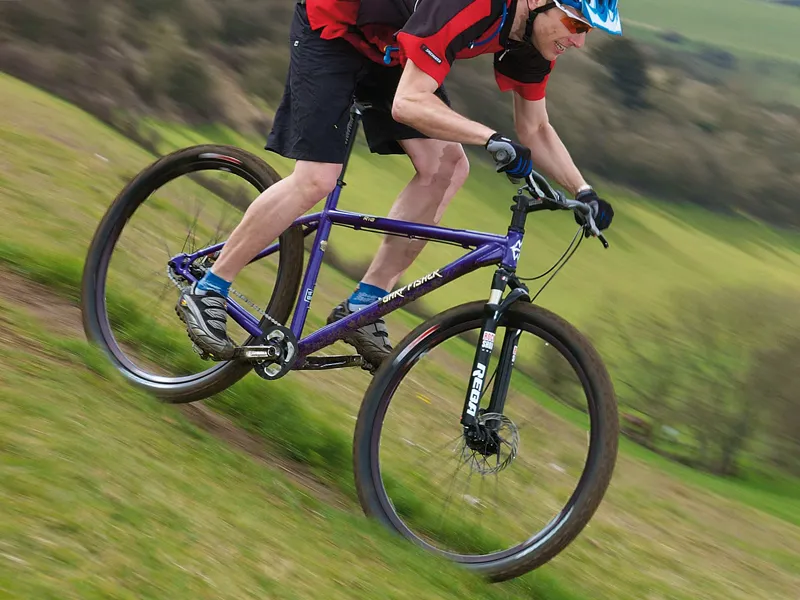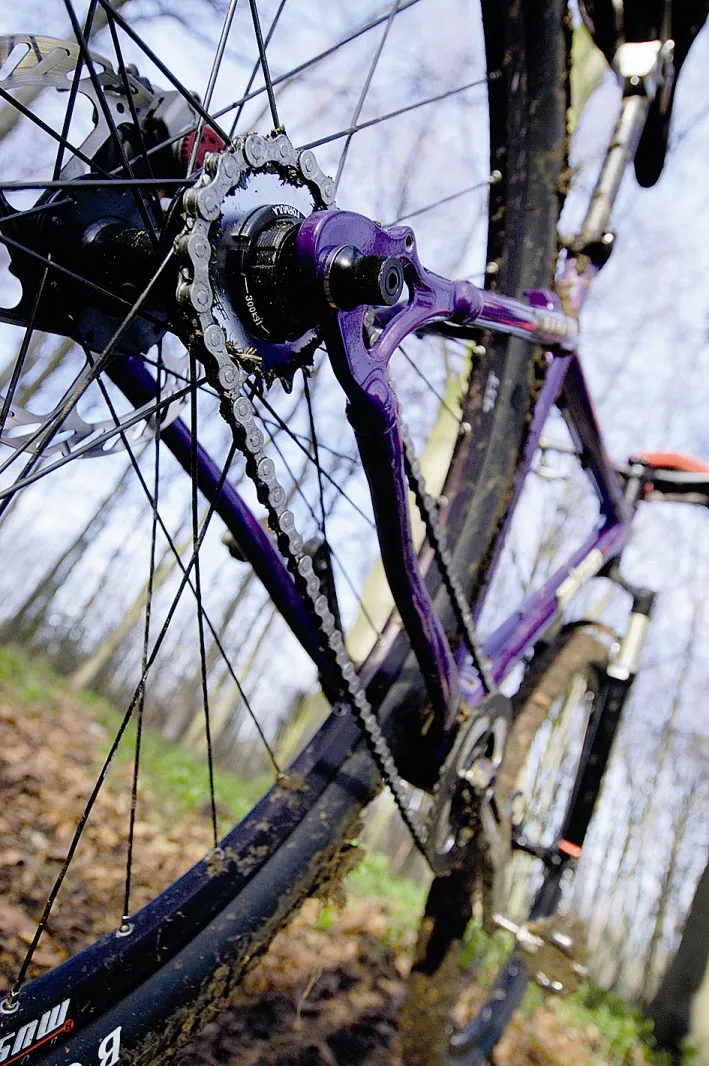Singlespeeding is just that: stripping mountain biking down to just one really nice gear. No mechs, no shifters, no rear cassette; just the cranks, chain and rear cog, your legs and lungs.
You can get singlespeed-specific frames with either sliding horizontal dropouts or eccentric bottom brackets for chain tensioning, or you can convert most standard vertical dropout (geared) frames to the cause.
Why should I…?
Having only one gear means that there are no delicately set-up gears to get clogged up, jammed or go out of whack. That ensures more robust performance in mud and bad weather – great for winter, because they’re easier to clean up. Singlespeeds are also lighter in weight and are about as minimalist as you can get on a bike.
Having only one gear also changes your riding as you learn to maintain your momentum and flow, come what may, by braking less and being smoother. It also helps you develop a sheer bloody-minded attitude to getting up any climb.
Singlespeeding is a great way to kick-start bike fitness because – save for on the flats – there’s no option for coasting. You’re either pushing the pedals or you’re walking on the ups. And because no one expects a singlespeeder to make it up climbs without pushing, when you beat your geared mates to the summit the victory is even sweeter.
How should I…?
Many bikes can be converted to singlespeeds, including all hardtails and most single-pivot suspension bikes. However, the use of a chain tensioner like Surly’s Singulator to take up any chain slack is essential.
Assuming you are stripping a geared bike down, you will need to remove the cassette and replace with a singlespeed sprocket and spacers, such as On-One’s conversion kit. You will also need to get either a singlespeed-specific crankset (the expensive option), or remove the inner and outer rings of your current set, and fit some spacers with your outer chainring bolts to secure the middle ring (alternatively, use your current bolts but purchase a chainring guide/bashring).
If the terrain you’ll be riding is generally flat or rolling with few steep climbs, then a 2:1 gearing ratio is generally best (32t chainring mated with a 16t sprocket in the back, or 34t:18t). For hillier terrain, a larger rear sprocket – 18t or 19t – will make the going easier. Gear down with larger rear sprockets if you struggle to turn the pedals, because you don’t want to put too much pressure on your delicate knees.
Highlights?
Simplicity: lower weight, less maintenance, more flow and finesse, and great for fitness
Lowlights?
Highly addictive, but it’s not known as a knee-popping for nothing: if you have knee problems, avoid singlespeeding

